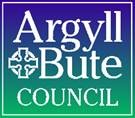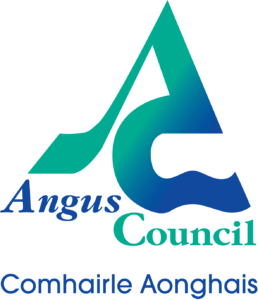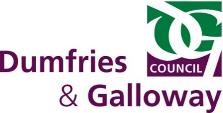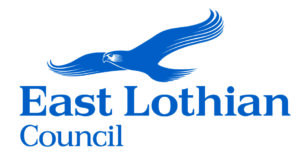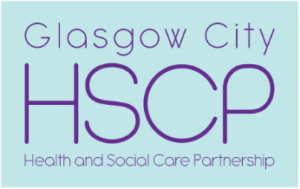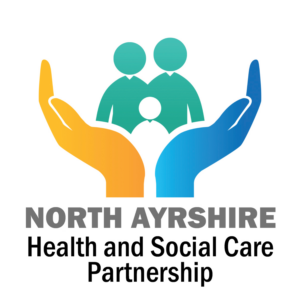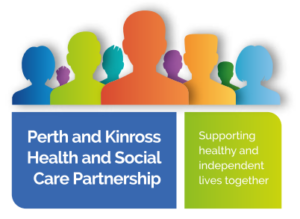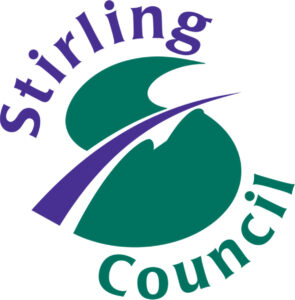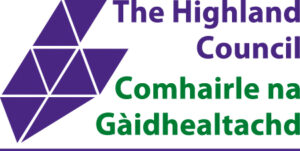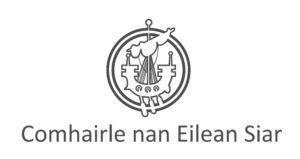Pre-Budget Scrutiny 2023-2024: In response to Criminal Justice Committee call for views
20 October 2022
Introduction
Social Work Scotland is the professional body for social work leaders, working closely with our partners to shape policy and practice, and improve the quality and experience of social services. We welcome this opportunity to comment on the Pre-Budget Scrutiny 2023-2027.
Justice Social Work is delivered primarily by degree qualified social workers, either through roles as front-line, or main grade positions, or with managerial and supervisory experience as senior social workers. Additional members of the social work workforce, sometimes called paraprofessional or support staff, as a result of their not holding social work degrees, provide additional and valuable support in delivering on Justice Outcomes.
In 2020, there were 937 main grade or senior justice social workers in Scotland, an increase from 898 in 2011. If para professional and other support staff are included, then the staff complement in 2020 increases to 1,950 workers, down from a figure of 2000 in 2011.
This submission reflects the priorities set within the Scottish Government’s (SG) Vision and National Strategy for Justice. It is noted that the reduction in Justice Social Work (JSW) staffing as indicated above and a decline in workers available to deliver on Justice Outcomes adds pressure. Additional workload compounds the demands experienced by the front line workforce. This pressure was recently noted in Social Work Scotland’s report, Setting the Bar.
JSW is responsible for the delivery of community orders and related JSW interventions, with support from partners including the Third sector. The range of services includes: –
- Assessments and reports to assist decisions on sentencing
- Court services to assist those attending court
- Bail information and supervision services as an alternative to custodial remand
- Supervision of individuals on statutory orders to tackle offending behaviour and the underlying causes, including those presenting serious risk of harm to others
- Supervision of individuals on community pay-back orders, including unpaid work which benefits local communities
- Prison-based social work services to those serving custodial sentences that involve statutory supervision upon release
- Preparing reports for the parole board to assist decisions about potential release
- Through-care services including parole, supervised release and other prison aftercare orders to ensure public safety
Individual councils receive annual letters setting out their justice funding. There seems to be no annual Scottish Government publication where the total funding is set out either for Scotland as a whole or by local authority. SWS understands that there are three main elements to JSW funding as follows:-
1. Scottish Government ring-fenced specific Criminal Justice Specific Grant to local authorities for statutory justice social work, fixed at £86.450 million for Scotland as a whole. This figure is shown in Table 5.25 of the Scottish Budget 2022-23, published in December 2021, and in the Local Government Finance Circulars for 2022-23 (Annex E for ring-fenced funding). The £86.5m amount has not changed for at least a dozen years (we have only checked back to 2010-11), despite increased expectations on justice social work and cost inflation.
2. Transfers to local authorities from the Scottish Government Community Justice budgets. These sums are far less transparent at national level. For four years only from 2018-19, the annual Local Government Finance Circulars included information in Annex E on “Top-Up Criminal Justice Social Work” funding that was clearly labelled as “Not Part of the Settlement”: £13.630 million in 2018-19, £13.665m in each of 2019-20 and 2020-21, and £19.399m in 2021-22. This information did not appear in earlier LGFS circulars or in those for 2022-23. (They are also not Covid-related). The annual Scottish Budgets include tables for “Local Government Funding out-with Core Settlements” and that for 2022-23 (Table 5.17) included the previous two years: these only show £4m in 2021-22 and 2022-23 for “Justice social work, former[ly] community justice services”. It is not clear why the larger “Top-up CJSW” funding is not in this table, or whether it includes the £4m. We understand that the 2022-23 funding also includes £19.4m top-up funding but have not seen that documented.
3. Other funding, including from local authority budgets. The latest published local authority financial returns (LFR03) include CJSW income and expenditure totals, shown below for the last two years available:
Table 2: Scottish local authority income and expenditure on CJSW Services
| 2019-20 | 2020-21 | |
| £M | £M | |
| Gross Expenditure adjusted for LFR Purposes | 137.474 | 138.771 |
| Gross Income adjusted for LFR Purposes | -121.472 | -125.447 |
| Net Revenue Expenditure on a funding basis | 16.002 | 13.324 |
The table appears to shows that councils spend more than their funding income on justice social work services. The income levels are also higher than is implied by the information available on JSW funding from the Scottish Budget and Local Government Finance Circulars. In each of those years that funding appears to total £100.115m (CJSW specific grant, plus “top-up”, so it is unclear where the additional income (c £21-24m) reported in the LFR03 returns is coming from.
There is much that is unclear about the funding of Justice Social Work services in Scotland. It would be helpful if the Scottish Government would publish a short annual statement of the total funding being made available for justice social work services.
The Committee may wish to consider that among its possible recommendations.
Transition and recovery from Covid 19
In SWS’ pre-budget submission to the Criminal Justice Committee in 2022/2023, details were outlined on how additional funding, “covid consequentials” were being utilised across the 32 Local Authorities (LA). The submission noted that there continues to be a focus on recovery and transformation across services in the justice system. In a number of LA areas, additional staff were recruited and the Third sector commissioned in order to deal with staff absence due to Covid 19 and increasing work demands.
By way of example, in August 2022, a survey of unpaid work services across JSW, highlighted that there were 710,000 outstanding hours yet to be completed across 8,400 Community Pay-Back orders with requirements to undertake unpaid work. There is a mixed picture across Scotland regarding the capacity of LA’s to address this backlog of hours, coupled with court backlogs and the strategic aim of reducing the prison population. Collectively, these key issues have implications for JSW and their ability to meet increased work demands and improve outcomes but with reduced levels of funding.
Response to three questions set by the Criminal Justice Committee
Question 1- What are your views on the impact of a possible real terms cut in the funding for the Scottish Justice Sector for financial year 2023/2024?
A real terms cut in funding for justice services in Scotland, where there is little or no scope for corresponding savings or reduction in demand, will inevitably affect capacity to deliver services to courts, individuals and their families. Unfunded high inflation is a problem for services in the current financial year and subsequent years, making it difficult to achieve the key policy objectives as outlined in the National Strategy for Community Justice 3 and the Scottish Government’s Vision for Justice in Scotland 4.
1.1 Balance between prison and community justice
Both policy documents restate the long-standing policy which seeks to reduce Scotland’s very high prison population, for many years the highest per 100,000 population in Western Europe. Scotland’s prison population peaked at an average daily number of 8,198 people in 2019-20, reducing due to Covid early release to 7,339 in 2020-21 and 7,504 in 2021-22. The number at 7 October 2022 was 7,380. It remains to be seen if numbers rise again, as the courts and criminal justice system recover from Covid backlogs. For this reason, the next paragraph considers trends in sentencing up to 2019-20, as these are not affected by Covid restrictions, policies, and consequences.
Consistent with a fall in reported crime, the total number of people convicted by Scottish courts fell by 35% between 2010-11 (115,581) and 2019-20 (75,251). The numbers of people given a custodial sentence fell by 28% during this period. The difference between the 35% and 28% reductions is due to a slight increase in the proportion of convicted offenders receiving custodial sentences: from 13% in 2010-11 to 15% in 2019-20.
Total non-custodial sentences decreased in volume terms over this period by 36%; in relative terms declining from 87% of the total main penalties for convicted offenders to 85%. This is entirely accounted for by the very large fall in financial penalties (mainly fines) which fell absolutely by 49% over this period, and also relatively from 58% of all main penalties in 2010-11 to 39% in 2019-20. Community sentences (increasingly payback orders) increased from 15,615 in 2010-11 to 16,296 in 2019-20 – from 14% to 22% of the total numbers of people convicted. This is down from a peak of 18,952 (19%) in 2015-16.
While there has been a welcome increase in the proportion of community sentences between 2010-11 and 2019-20 (from 14% to 22%), this has been insufficient to reduce the proportions of custodial sentences (which increased slightly from 13% to 15%), largely because financial penalties declined (from 58% to 39%).
Moreover, these sentencing trends did not significantly reduce Scotland’s prison population to 2019-20 because another sentencing trend over this period was a steady increase in the average durations of custodial sentences from 277 days in 2010-11 to 356 days in 2019-20. As we have seen, the main reason for the fall in Scotland’s prison population since 2019-20 is the policy of Covid early release – a public health measure intended to reduce infection due to overcrowding.
1.2 Consequences of Scotland’s high rate of imprisonment
People with mental health problems, addictions, learning difficulties, or brought up or living in deprived communities, or having been in the care systems, are all over-represented in the prison population are therefore in need of public health measures and rehabilitation.
The latest available re-conviction data (2018/19) shows that 52% per cent of short sentence offenders released from prison were re-convicted within one year (up from 49% in the previous year). In comparison re-conviction rates for community payback orders were much lower at 29%, the same as the year before. Research studies on re-offending have also found that “community sentences are more effective in reducing re-offending than short-term prison sentences”.
SWS agrees with the Scottish Government’s recent evidence summary on re-offending:
Community interventions are more effective than short prison sentences at addressing offending behaviour and breaking the cycle of re-offending. Prison can by its very nature disrupt factors that can help prevent offending, including family relationships, housing, employment and access to healthcare and support. At the same time as the prison population has been increasing, the use of community sentences has increased to over 20%, in 2019-20.
More however needs to be done to ensure that consistent and effective interventions are available across all of Scotland to assist in creating positive futures for those who have offended.
The same Scottish Government summary reports that:
Research conducted by the Scottish Sentencing Council revealed that community sentences are commonly viewed by the judiciary as providing a greater chance of rehabilitation and, in general terms, as a more cost-effective alternative to imprisonment.
It is also worth quoting from the news release issued by the Scottish Sentencing Council:
The engagement we have carried out suggests that one of the greatest challenges to judicial confidence in community-based disposals concerns limitations of resources to support their management and delivery. To support both judicial and public confidence and efforts to encourage rehabilitation and, ultimately, public safety, it is essential that effective community-based options are available to the courts. This requires greater consistency of provision of community sentences and the services which support their delivery across Scotland, and that these sentences can be robustly managed.
1.3 The funding balance between prison and community justice services
Greater investment in community justice would also deliver savings in the medium to long-term. This is because prison is also a lot more expensive than community justice, currently costing around £50,000 per prisoner per year (excluding capital costs). Reducing the number of prisoners per head of population over time down to, say, the average for Western European nations, would enable older prisons to be closed, and would free up funding for community justice, public health or other services.
Social Work Scotland welcomed the Scottish Government’s commitments in the 2021 Programme for Government to reduce unnecessary imprisonment through new legislation, and
“Change the way that imprisonment is used, with consultation on initial proposals relating to bail and release from custody law this autumn. This will be underpinned by investment in a substantial expansion of community justice services supporting diversion from prosecution, alternatives to remand and community sentencing, which evidence shows is more effective at reducing re-offending”.
But we also note that for 2022-23, funding for prison services was actually increased relative to community justice, whose 1.9% estimates hardly met the then inflation estimates:
Table 1: Scottish Budget 2022-23 Criminal Justice Fiscal resource (excluding capital funding)
| 2021-22 | 2022-23 | Change | ||
| £ million | £ million | £ millions | % | |
| Scottish Prison Service | 354.600 | 369.600 | 15.000 | 4.2% |
| Community Justice | 46.252 | 47.140 | ||
| Victim/Witness support | 18.158 | 20.158 | ||
| CJSW specific grant to LAs | 86.450 | 86.450 | ||
| Community Justice total | 150.860 | 153.748 | 2.888 | 1.9% |
Source: Scottish Budget 2022-23, December 2021, Level 4 data
We explore issues about the volume and transparency of criminal justice funding to local authorities in the next section.
1.4 Dealing with inflation in CJSW funding
We share the Committee’s concern about the treatment of inflation going forwards, but first consider how it has been dealt with currently and in the past. As noted above, the core JSW specific grant of £86.5m has not been updated for inflation for many years. However, it would have been included in the base local government expenditure if and when inflation uplifts were provided within Local Government Finance Settlements to help councils in whole or part with annual pay settlements and other inflation.
Going forward, it might be more transparent to uplift the core JSW specific grant annually for inflation. COSLA is generally opposed to specific revenue grants on the grounds that these constrain local authority budgeting in relation to varying local needs. However, the case for the specific CJSW grant being ring-fenced is acknowledged to be stronger, since it is important that the courts have sufficient non-custodial sentencing options available in every local authority area. Ring-fenced funding may be necessary to that aim, provided that the funding levels are themselves sufficient (considered later). It seems illogical to ring-fence the core CJSW grant, but not the inflation uplifts.
1.5 Inflation in 2022-23
Pay is among the biggest inflation pressures for local authorities, including for Criminal Justice social work staff. The recent Local Government Pay Settlement for 2022-23 was supported financially by the Scottish Government, whose 2022 Programme for Government stated that:
We are also supporting pay offers which put money into people’s pockets, for example with an investment of more than £250 million on a recurring basis into local government pay. This means those paid £20,000 or less get a rise of £2,000, others £1,925 or 5%, and the increase for the best paid is capped in order to boost the lower paid. [Page 4]
COSLA has stated that this still leaves local authorities to meet £140 million of the cost: In addition, many services have not yet fully returned to pre-Covid levels.
1.6 Inflation in 2023-24 and service pressures
1.6.1 Estimating inflation for 2023-24
Current estimates of inflation have increased significantly since the 2022-23 budgets were set.
Page Break
Table 3: Year on year percentage inflation forecasts and projections
| Date published | Agency | Measure | 2022-23 | 2023-24 | 2024-25 | 2025-26 | Notes |
| 21.10.21 | Office for Budget Responsibility | GDP deflator | 2.71 | 2.20 | 1.89 | 1.99 | OBR supplementary Table 1.17, Used for UK Autumn Budget |
| 09.12.21 | Scottish Fiscal Commission | GDP deflator | 2.71 | 2.20 | 1.89 | 1.99 | Economic and Fiscal Forecasts, OBR figures used for Scottish Budget 2022-23 |
| 03.02.22 | Bank of England Monetary Committee | CPI | 6.44 | 3.37 | 2.36 | At 0.1% interest rates | |
| 05.05.22 | BoE MC | CPI | 9.72 | 5.43 | 2.70 | At 0.5% interest rates | |
| 04.08.22 | BoE MC | CPI | 11.33 | 8.85 | 2.25 | 1.32 | At 1.75% interest rates |
| 31.10.22 | Office for Budget Responsibility | GDP deflator | ? | ? | ? | ? | For UK Medium Term Fiscal Plan |
| 31.10.22 | CPI | ? | ? | ? | ? | ||
| 03.11.22 | BoE MC | CPI | ? | ? | ? | ? | Next meeting with report |
| 15.12.22 | Scottish Fiscal Commission | GDP deflator | ? | ? | ? | ? | for Scottish Budget |
At the time of writing, these inflation estimates are subject to considerable volatility given that they are affected by fiscal and monetary measures being taken independently by the UK Government and Bank of England, with considerable turbulence in the financial and other markets. Estimates of the impacts on the decreasing purchasing power of flat-line cash-limited Scottish Government justice funding lines will need to be made again as new full-year inflation projections are made by UK bodies such as the Bank of England and the Office for Budget, and by the Scottish Fiscal Commission, to support both UK and Scottish Government emergency and annual budgets.
The illustrative modelling presented in the Committee’s background paper to the Call for Views is based on SPICe work on the May 2022 Scottish Government’s Resource Spending Review, using March 2022 inflation projections (GDP deflators). It did not include JSW funding. The inflation impacts will need to be re-assessed when the Office for Budget Responsibility publishes its economic forecasts on 31 October in response to the UK Government’s revised medium term financial plan.
One issue that would benefit for further consideration by SPICe or Scottish academics is the use of the GDP deflator projections for public expenditure, the largest item is which is staff pay which is typically negotiated around the Consumer Price Index. CPI inflation forecasts or projections tend to be larger than the GDP deflators used to convert nominal to real GDP.
After a decade or more of fiscal austerity in the public sector as a whole, and particularly in local government, there are few “efficiency savings” available to offset rising unfunded inflation. The return of the UK Government to public sector austerity policies, as the Chancellor has recently mooted, is a matter of very grave concern.
Other Work Pressures
SWS has engaged with members who have expressed concern about the prospect of having a real terms cut in funding in the next financial year, for a number of other reasons:-
- Workforce issues – staff recruitment and retention has been a challenge both during the pandemic and in the recovery. This will be compounded by the anticipated increase in Covid cases over the coming winter months. Dealing with increased work demands with insufficient funding and staff absence is a cause for serious concern. Staff morale and well-being is at an all-time low, making it difficult to attract new people into the profession. In order to understand the pressures and challenges facing the social work profession, SWS, commissioned a specific piece of research that engaged with social workers, social work leaders and people employed within social work structures. The resulting report “Setting the Bar” illustrates a system that has grown significantly in terms of policy, strategic demands and complexity of workload, in the context of reduced funding impacting on available resources. The affordability of a cost of living pay increase, coupled by the cost associated with salary increments where there is a real term cut in funding will result in JSW managers having to prioritise services. The view is that their expenditure already exceeds available grant funding. The requirement to train staff on the job to professional standards, with a reducing budget is another workforce issue where managers are trying to find efficiencies and solutions.
- Cost of Living challenges– the level of inflation and escalating living costs is affecting both staff and service users, requiring that some seek assistance from food banks and other practical support. This added concern compounds the workload and budget pressures. This also places additional stress and pressure on social work budgets through increased requests for section 12 payments (from the Social Work (Scotland) Act 1968).
- Workload/Caseload– There is significant pressure on the work of JSW as highlighted due to Covid and backlogs within the court system. There is concern that there is likely to be an increase in the level of re-offending due to the current climate of hardship and that there will be a risk that positive outcomes for service users, (including successful rehabilitation), will be limited or eroded due to the pressures on social workers workload. Two examples offered by members includes the ability to continue to run the Caledonian system (a programme which focuses on higher risk perpetrators of domestic abuse and support services for women and children), as well as the unpaid work service. During October 2022, a number of LA’s running unpaid work commented that they cannot meet the challenge of “speed and immediacy” in line with national outcomes and standards. They are addressing problems of increased non-attendance by service users, due to Covid and other factors and are dealing with reduced numbers due to restrictions which are still in place. In general, managers note that caseloads are characterised by people with more complex needs, including trauma, learning difficulties, mental health and substance use. In order to address these issues and contribute to the vision of a safer Scotland, experienced staff and appropriate resources are essential.
Question 2- What are your views of the impact of possible real terms cut in the funding for the Scottish justice sector for the financial years over the longer term if the present rate of high inflation continues beyond 2023?
All of the above points will continue to apply and escalate over the longer term, making it more difficult to minimise the risks and adverse effects on staff, individuals and communities. There are concerns about the impact on vulnerable people and the capacity to maximise public safety if resources are depleted to an extent where services cannot be operated safely or where students do not wish to make social work a career choice.
- Delivering on the SG Justice Vision and Strategy– prevention and early intervention is a key aim but requires appropriate resources, both through robust financial framing and workforce provided to achieve aspirations. Diversion from prosecution is an example of a preventative service which can keep individuals out of formal systems. In 2019-2020, there were 3,100 referrals made into the service across Scotland. Work is underway to review and enhance this service. There is also an ongoing review of voluntary through-care and mentoring which has the potential to impact on the resources of JSW. It is critical to have consistent, high quality interventions and public protection arrangements across Scotland which requires having skilled staff and resources to support the delivery of these services. A reduction in funding would increase risk in ability to deliver on these policy aspirations and legislative responsibilities.
- National Care Service- The National Care Service (Scotland) Bill raises significant issues for JSW on the question of whether the service should transition from LA into the NCS. A SG reference group is being set up to consider the future options available for the delivery of JSW. In the progression of a NCS in Scotland there will be a change for JSW, and the ability to accurately forecast for the financial envelope to support this major change needs careful consideration and robust financial modelling.
- Outcomes– increased workload with fewer resources in place to deal with the complex issues in justice services is likely to have a detrimental impact on positive outcomes for individuals and the stated aim of having safer communities. It challenges the ability to deliver transformative services with individuals at its core.
- Prison population– The Bail and Release from Custody (Scotland) Bill seeks to make changes in relation to bail for people accused of a crime, as well as arrangements for the release of prisoners. In practice, this would mean that potentially, there would be more people on bail and less people in custody, making a significant saving to the public purse. If successful, it is likely to take a number of years before any resources are likely to transfer from the Scottish Prison Service to community services. A careful balance would require to be struck to mitigate the risks of delivery of justice services during such a transition period.
Question 3- Any other comments you may wish to make on the impact of the possible flat cash settlement on the Scottish justice sector or the budget more widely?
The Justice Vision aims to address the underlying causes of crime and to support everyone to live full and healthy lives. This involves having strong leadership and that is grounded in positive collaboration and partnership working to ensure that services are joined up and have outcomes which are trauma-informed and person-centred. There is a risk that co-production and collaborative practice will be undermined without the adequate financial and workforce resources in place. The process of procurement and commissioning with the Third sector is likely to reduce and encounter further pressures as JSW services are already struggling to run mainstream, statutory services, with a depleted budget. The Third sector make an important contribution to justice priorities across Scotland. If there is to be a shift to prevention, then the running costs are likely to double, therefore it requires greater investment in community justice as a whole.
For further information contact: Sharon.stirrat@socialworkscotland.org
Sharon Stirrat
Social Work Scotland
Justice Policy and Practice Lead



